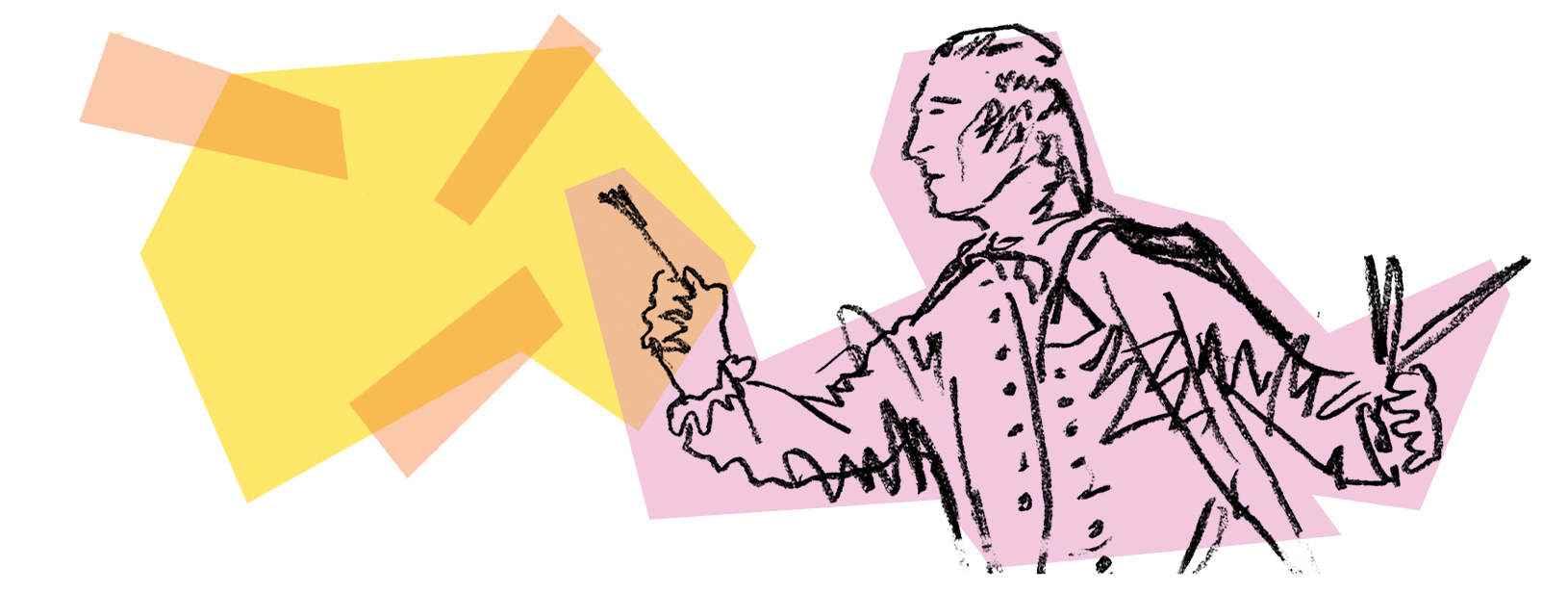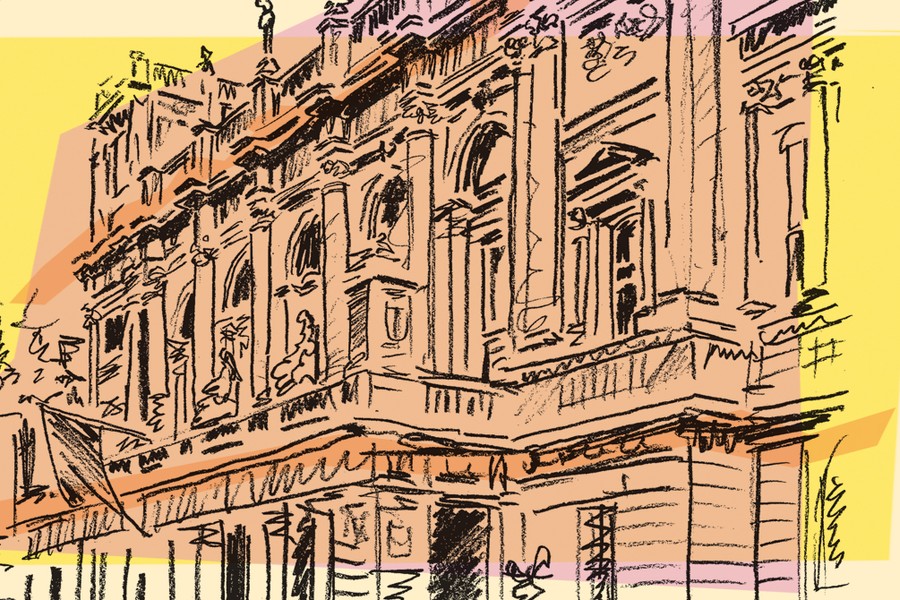This has been a project which has preoccupied the Royal Academy ever since it first became aware that the big building in Burlington Gardens, immediately north of the existing Academy, was going to be vacated by the British Museum in the late 1980s. The first architectural competition was held in 1998 and a second in 2002. And the third for the renovation of the building, which was won by David Chipperfield RA, in 2008.
The scheme is straightforward: to restore the existing building, which was designed by James Pennethorne as an examination building for the University of London; reinstate a modern version of the original lecture theatre; put in new exhibition galleries in the space originally occupied by laboratories at the back of the building; open up a gallery on the west side to show the Royal Academy’s collection; retain the integrity of the original building, but where necessary put in rigorously modern elements. After a year in the planning, Chipperfield realised that the only way that the building could work effectively as a part of the Royal Academy as a whole was to provide a connection to our existing main building. This led to the proposal for a connecting bridge which links the two buildings on axis front door to front door.
Although the plans were simple, the construction has not been. A simple decision to drop the level of the floor in Burlington House by three feet in order to improve disabled access led to months of construction workers removing the earth in wheelbarrows. But, as the months go by towards the completion of the project, the main façade has now been revealed in its original nineteenth-century glory, the lecture theatre is taking shape, the concrete bridge has been completed, and we are making plans for the opening of the building in early summer 2018.
Next year will be an exciting one for the Royal Academy; it is our 250th anniversary, celebrating our survival through two centuries of changing fortunes — sometimes in the vanguard of fashion, sometimes reactionary, representing the leading artists and architects of the day, and teaching the next generation in the Royal Academy Schools.
We begin the year with the opening of our exhibition Charles I: King and Collector, which reconstructs as far as is possible, the extraordinary collection of pictures assembled by Charles I, which was largely dispersed following his execution and only partially reassembled following the Restoration. The exhibition celebrates, and is made possible, by our close connection to the Royal Collection Trust.

In June, we will be celebrating 250 years of the annual Summer Exhibition with a bumper edition, co-ordinated by Grayson Perry, and with an accompanying exhibition entitled The Great Spectacle: 250 Years of the Summer Exhibition, which will explore the highs, and occasional lows, of its history, beginning in 1769 when it was nearly the only exhibition in town, showing work from floor to ceiling in a gallery on Pall Mall.
In the autumn, we are going global, with an exhibition on the arts of Oceania, celebrating the fact that 1768 was not only the year of the foundation of the Royal Academy, but also the year that Captain Cook set off on the first of his voyages to the South Seas.
The point of the new building project is to demonstrate that the Royal Academy is not just a venue for exhibitions.
But the point of the new building project is to demonstrate that the Royal Academy is not just a venue for exhibitions. The new collections gallery will show off the amazing collection of works which have been assembled by the donation of so-called diploma works by each of the Royal Academicians: there will be Self-Portraits by Reynolds and Gainsborough; the early copy of Leonardo’s Last Supper which was acquired by the Academy in 1821; Michelangelo’s great Tondo, which was given in 1830; and Constable’s Leaping Horse, as well as some of his oil sketches, demonstrating the move from history painting, using the bible or antiquity for inspiration, to going outdoors and being inspired by landscape and the countryside.
And for the first time, the general public, as they walk through the building, will be able to see and appreciate the work done by the students of the Royal Academy Schools, which will be shown o in a dedicated gallery space at the bottom of the bridge.
It will be the biggest set of architectural and institutional changes that the Royal Academy has experienced since its foundation in 1768.
JM Finn has been a corporate partner of the RA since 2012.



